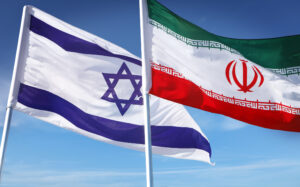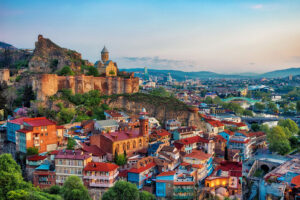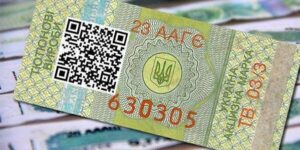
Comparative analysis of the economies of Israel and Iran
| Indicator | Iran | Israel |
| GDP | ~$400 billion | ~$540 billion |
| GDP per capita | ~$4 400 | ~$54 200 |
| Public debt/GDP | ~18 % | ~67 % |
| Military expenditures | 2.5% of GDP ($10 billion) | 5% of GDP ($27 billion) |
| Currency/gold reserves | ~$7.7 billion | ~$76 billion |
| Innovation indicators | ~1 patent/million people | ~74 patents/million people, developed hi-tech |

Israel’s strikes on Iran’s gas infrastructure will push up gas prices in Europe, which means they may also rise in Ukraine, according to Andriy Kobolev, former head of the board of Naftogaz Ukraine.
“Israel has begun to destroy Iran’s gas infrastructure with drones… For those wondering what to do about gas purchases for this winter: this will have a significant impact on the balance (and therefore the price) of natural gas in Europe,” he wrote on Facebook on Sunday.
Kobolev explained that Iran had been supplying gas to Turkey, which resold it to the EU, but now, due to Israeli strikes, Iranian gas is at risk of being cut off, and the Turks will not be able to replace it with Russian gas because both gas pipelines are almost fully loaded.
“Therefore, Turkey will be forced to either reduce gas supplies to the EU or increase the share of more expensive LNG. In any case, this will push prices up in the EU. And if Israel continues to attack the Iranian gas sector, part of Russian gas may be redirected to Iran,” the former head of Naftogaz concluded, advising to prepare for such an impact on prices.
As reported, Ukraine was forced to return to significant gas imports from Europe due to Russian strikes on gas infrastructure.
According to the Ukrainian Gas Transmission System Operator (OGTSU), 501 million cubic meters were imported in May (54% via Hungary, 33% via Poland, and 12% via Slovakia), or 16.1 million cubic meters per day. At the same time, former OGTSU board chairman Serhiy Makogon believes that Ukraine needs to import approximately 870 million cubic meters per month, or 29 million cubic meters per day, to achieve last year’s planned gas storage targets in underground gas storage facilities (UGS).

The Georgian government is discussing a package of amendments to the Criminal Code and the Administrative Code aimed at tightening immigration policy. The goal is to strengthen the fight against illegal migration and prevent abuse of the asylum system.
Main amendments:
Deportation statistics:
How many foreigners are there in Georgia?
According to Geostat data for 2024, 135,811 people entered the country, including:
In addition, up to 100,000 Russians were in Georgia at the peak of the migration flow, of whom 60,000 remained and 30,000 left the country in 2023. According to estimates by the UN and migration centers, approximately 26,000 refugees live in Georgia, mainly Ukrainians, but also Syrians, Iraqis, Iranians, and Russians.
Georgia is tightening migration controls, introducing deportation with long-term bans, increasing fines, and speeding up the processing of applications. This is part of efforts to combat illegal migration and abuse of the asylum procedure.
However, the visa waiver remains in place and requirements for stays of up to one year are being simplified. Tens of thousands of foreigners, mainly from Russia and Ukraine, reside in the country, making the reforms both sensitive and controversial. The changes to migration legislation will have long-term consequences for both new arrivals and Georgia’s migration practices.

Revenues from excise taxes on manufactured and imported goods in January-May 2025 reached UAH 69.7 billion, compared to UAH 46.9 billion in the same period last year, according to Ruslan Kravchenko, head of the State Tax Service (STS).
“In five months, the budget has already received UAH 11.3 billion (+19.3%) more than planned. In May 2025, UAH 15.3 billion in excise tax was received,” he said.
Kravchenko explained that the overperformance was due to an increase in imports of excisable goods, in particular tobacco products.
“Systematic control over the circulation of excisable goods is also yielding noticeable results,” added the head of the State Tax Service.

Italy is one of the most attractive countries in Europe for buying real estate. Its favorable climate, rich history, developed infrastructure, and high standard of living attract both investors and those looking for a second home on the coast or in a picturesque village. But before buying, it is important to understand the tax system: in Italy, property taxes depend on many factors, from the location of the property to the status of the owner.
Main property taxes in Italy
The Italian tax system for real estate includes both one-time taxes on purchase and annual taxes on ownership.
IMU (Imposta Municipale Unica) — municipal property tax
The IMU rate is set by local authorities and ranges from 0.46% to 1.06% of the cadastral value of the property.
The basis for calculation is the cadastral value (rendita catastale) multiplied by an adjustment coefficient (usually 160 or 168), after which the rate is applied.
When buying from a private individual:
2% of the cadastral value — if it is the primary residence for a resident buyer.
9% — if it is a secondary or investment property.
When buying from a developer:
10% VAT, plus fixed registration fees (€200 each).
Cadastral and mortgage fees are also payable — €50 each.
Special features for non-residents
Foreigners are free to buy real estate in Italy. However, there are several important nuances:
If you are not registered as a resident, IMU tax is levied even on a single property.
Property status is determined not by citizenship, but by registration with the municipality (residenza anagrafica).
If the property is rented out, the rental income is subject to mandatory declaration and taxation:
under the simplified cedolare secca scheme — 21%,
or at a progressive income tax rate: from 23% to 43%.
Calculation examples
An apartment in Rome purchased by a German citizen for vacation purposes:
Cadastral value: €80,000
IMU at a rate of 1%: approximately €1,280 per year
House in Tuscany, rented out:
IMU + TARI: from €1,500 to €2,000 per year
Plus tax on rental income: 21% or according to the scale.
Conclusion
The Italian tax system for real estate requires attention and calculations. The main annual expenses are IMU and TARI, and when purchasing, there are significant one-time fees. In the case of rental or resale, there are additional taxes on income. Therefore, before signing a contract, it is recommended to consult with an Italian lawyer or accountant to avoid surprises and fines.
Source: http://relocation.com.ua/property-taxes-in-italy-analysis-by-relocation/

Buying real estate in Serbia is not only a profitable investment, but also an obligation to pay annual property tax. All property owners, both Serbian citizens and foreigners, must pay this tax, regardless of whether the property is used or not.
Payment schedule
Property tax in Serbia is paid quarterly:
Important: in case of late payment, a penalty of 16.5% per annum is charged, and in case of systematic evasion, penalties are possible.
How to pay tax for the first time?
For non-residents of Serbia, the procedure begins with a personal visit to the tax office. Notifications are not sent to foreigners automatically.
You must provide:
If there are several owners
Documents must be submitted simultaneously by all co-owners. The tax is calculated based on the shares:
If the shares are not specified, the amount is divided equally.
Property tax rates in Serbia (2025)
The tax is calculated based on the estimated value of the property and is divided into several categories:
Source: https://t.me/relocationrs/1036